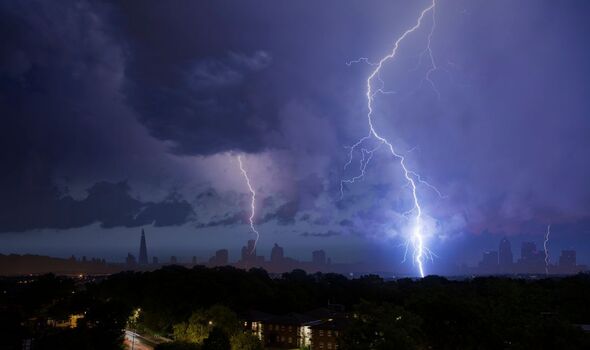Cleveland, OH (August 6, 2024) — Residents of Northeast Ohio are being urged to stay alert and prepared as severe weather conditions are forecasted to impact the region. The National Weather Service (NWS) has issued Severe Thunderstorm Warnings for several counties, with a Tornado Watch in effect for the western parts of the state.
Severe Thunderstorm Warnings
The NWS has highlighted the heightened risk of severe thunderstorms in Northeast Ohio, particularly affecting the counties of Cuyahoga, Lake, Geauga, and Ashtabula. These warnings indicate the potential for storms producing damaging winds, large hail, and heavy rainfall that could lead to flash flooding.
Key Details of the Severe Thunderstorm Warnings:
- Counties Affected: Cuyahoga, Lake, Geauga, Ashtabula
- Time Frame: August 6, from 2:00 PM to 9:00 PM
- Potential Hazards:
- Wind gusts up to 70 mph
- Hail up to 1.5 inches in diameter
- Heavy rain with the potential to cause localized flooding
Tornado Watch for Western Counties
In addition to the thunderstorm warnings, a Tornado Watch has been issued for the western counties of Ohio, including Lorain, Erie, Huron, and Sandusky. This watch signifies that conditions are favorable for the development of tornadoes, and residents should be prepared to take immediate action if a Tornado Warning is issued.
Key Details of the Tornado Watch:
- Counties Affected: Lorain, Erie, Huron, Sandusky
- Time Frame: August 6, from 12:00 PM to 10:00 PM
- Potential Hazards:
- Tornadoes
- Severe thunderstorms with wind gusts up to 80 mph
- Hail up to 2 inches in diameter
Preparedness and Safety Tips
Residents in the affected areas are advised to remain vigilant and take the following precautions:
- Monitor Weather Updates: Stay tuned to local news channels, weather apps, and the NWS website for real-time updates and alerts.
- Secure Outdoor Items: Bring inside or secure outdoor furniture, grills, and other items that could become projectiles in strong winds.
- Have a Safety Plan: Identify the safest place in your home to take shelter during severe weather. A basement or an interior room on the lowest floor away from windows is ideal.
- Emergency Kit: Prepare an emergency kit with essentials such as water, non-perishable food, flashlight, batteries, first aid supplies, and important documents.
- Heed Warnings: If a Tornado Warning is issued, seek shelter immediately. Do not wait until you see the tornado to take action.
Impact on the Community
Local authorities are on high alert and have activated emergency response plans to address potential impacts. Schools, businesses, and community centers are urged to review their severe weather protocols and ensure that everyone is aware of the safety measures in place.
Community Response:
- Schools: Some schools in the affected areas have announced early dismissals to ensure students can return home safely before the storms intensify.
- Businesses: Employers are encouraged to monitor the weather and make decisions that prioritize the safety of their employees, including allowing remote work if possible.
- Public Services: Emergency services are on standby, with additional personnel and resources deployed to respond to any incidents resulting from the severe weather.
Historical Context
Northeast Ohio is no stranger to severe weather, with a history of thunderstorms and tornadoes particularly during the summer months. The region’s geography can contribute to rapid weather changes, making it crucial for residents to stay informed and prepared.
Notable Past Incidents:
- June 2019 Tornado Outbreak: A series of tornadoes affected Ohio, causing significant damage and highlighting the importance of preparedness.
- July 2020 Severe Storms: A powerful storm system brought widespread wind damage and flooding to parts of Northeast Ohio.
Conclusion
As severe thunderstorms and the possibility of tornadoes loom over Northeast Ohio, it is imperative for residents to stay informed and take proactive measures to ensure their safety. The NWS and local authorities will continue to monitor the situation and provide updates as necessary. Stay tuned to trusted sources for the latest information and be prepared to act quickly if severe weather strikes.
For more information and updates, visit the National Weather Service website or follow local news outlets. Stay safe, Northeast Ohio.



